Vegan Seekh Kebabs (Soya Chunk Kababs)
These vegan seekh kebabs are a revelation — scrumptiously crispy on the outside, with a meaty, succulent, chewy, and incredibly flavoursome inside. It’s hard to believe these are made from soy chunks, an affordable source of plant-based protein.
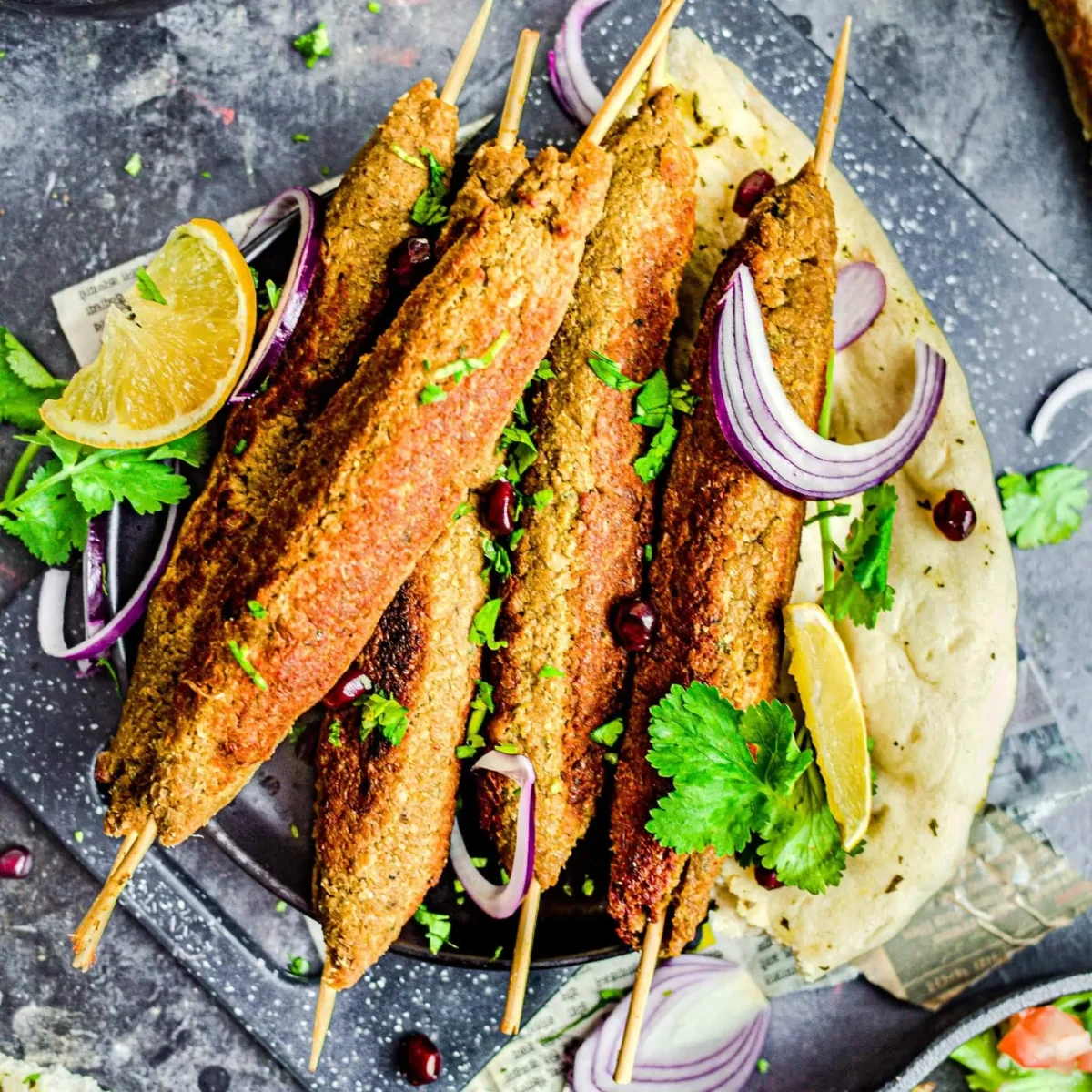
The idea for these vegan seekh kebabs came to me in 2019, when I was making the traditional hara bhara kebabs (vegetarian kebabs made from an array of healthy green vegetables!). Those were fantastic, but they weren’t meaty. They weren’t fooling anyone.
On the other hand, these vegan seekh kebabs are packed with that slightly smoky, umami-led flavour so reminiscent of meat. I’ve tested this recipe on members of my family who are omnivores, and they all agree it boasts a far more satisfying, full-bodied flavour than any meat kebab.
They’re seasoned with a tempting mix of spices, nutty roasted chickpea flour, a scattering of fresh herbs, punchy ginger garlic paste, and plenty more.
When served on a bed of salad and a pillowy, buttery garlic and coriander naan, these kebabs will have you craving them day and night.
🥳 Why You’ll Love These Vegan Seekh Kebabs
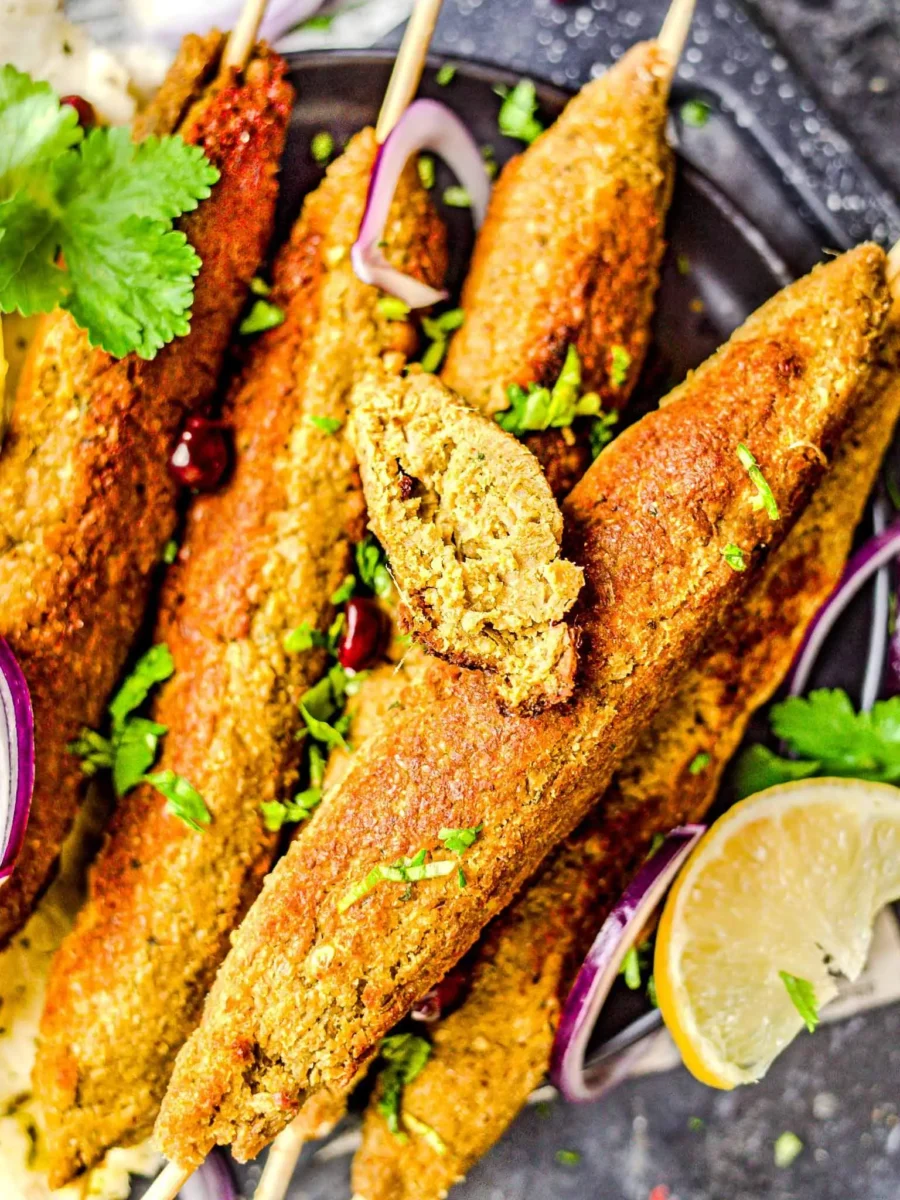
🥙 The Ingredients You’ll Need
- Soy Chunks: Our key ingredient is a plant-based protein. Find these in Indian markets or online retailers (Amazon linked).
- Green chillies: Fruity, sharp, and spicy, jwala green chillies (the type most commonly used in India) add another layer of heat.
- Red onion: Boosts the umami with a subtle sweetness.
- Ginger garlic paste: Punchy, but melts into a buttery warmth once the kebabs are cooked. Subtle. I like to make my own; I don’t recommend jarred (too acidic).
- Seasonings including coriander powder, red chilli powder, turmeric powder, cumin powder, garam masala, black pepper, and salt (of course!) all build up the layers of flavour that make these vegan seekh kebabs so moreish.
- Fresh herbs, such as coriander and mint, add a touch of cooling citrus.
- Gram flour (chickpea/garbanzo bean flour): Nutty and slightly sweet. It’s naturally gluten free and acts as a binder to help our kabab mix stay together.
- Plain flour (all-purpose [AP] flour): Another binder.
- Breadcrumbs: Make the mixture more succulent.
- Neutral oil: For frying/grilling the vegan seekh kebabs. You can use sunflower oil, rapeseed oil, or vegetable oil. High smoke point is preferred.
Dietary Requirements
I specifically designed this recipe to be fantastic for those with dietary requirements. That means these vegan seekh kebabs are:
- Vegan and plant-based. Despite the meaty flavour, there’s no meat here, meaning you get all the flavour without cruelty. It’s also dairy-free.
- Nut free. There’s no nuts involved in this recipe, but you still get the benefit of a gorgeous nutty flavour from the roasted chickpea flour.
While the vegan seekh kebabs aren’t gluten free, they can be adapted to be! Use cornflour (cornstarch in the U.S) to bind the vegan kabab mixture and gluten free breadcrumbs (you can make your own by blitzing up your favourite dried/stale free-from bread).
Let’s Talk About Soy Chunks
Never heard of soy chunks? You’re not alone. While soy chunks are a beloved ingredient in India, often used as a cheap and filling source of vegetarian (and vegan) protein, they’ve fallen out of fashion in other countries with the advent of more trendy meat-free options, like wheat and pea protein.
Sometimes known as “meal maker” (because it’s all you need to make a meal!), they’re made from soy flour.
When you purchase soy chunks, they will be dry to the touch. Prior to cooking, you need to rehydrate them by soaking the protein in boiling water.
Once rehydrated, the soy chunks become soft and spongy — ideal for soaking up all the fun seasonings we’ll add.
In addition to protein, soya chunks also contain plenty of iron, fibre, and calcium, amongst other essential nutrients.
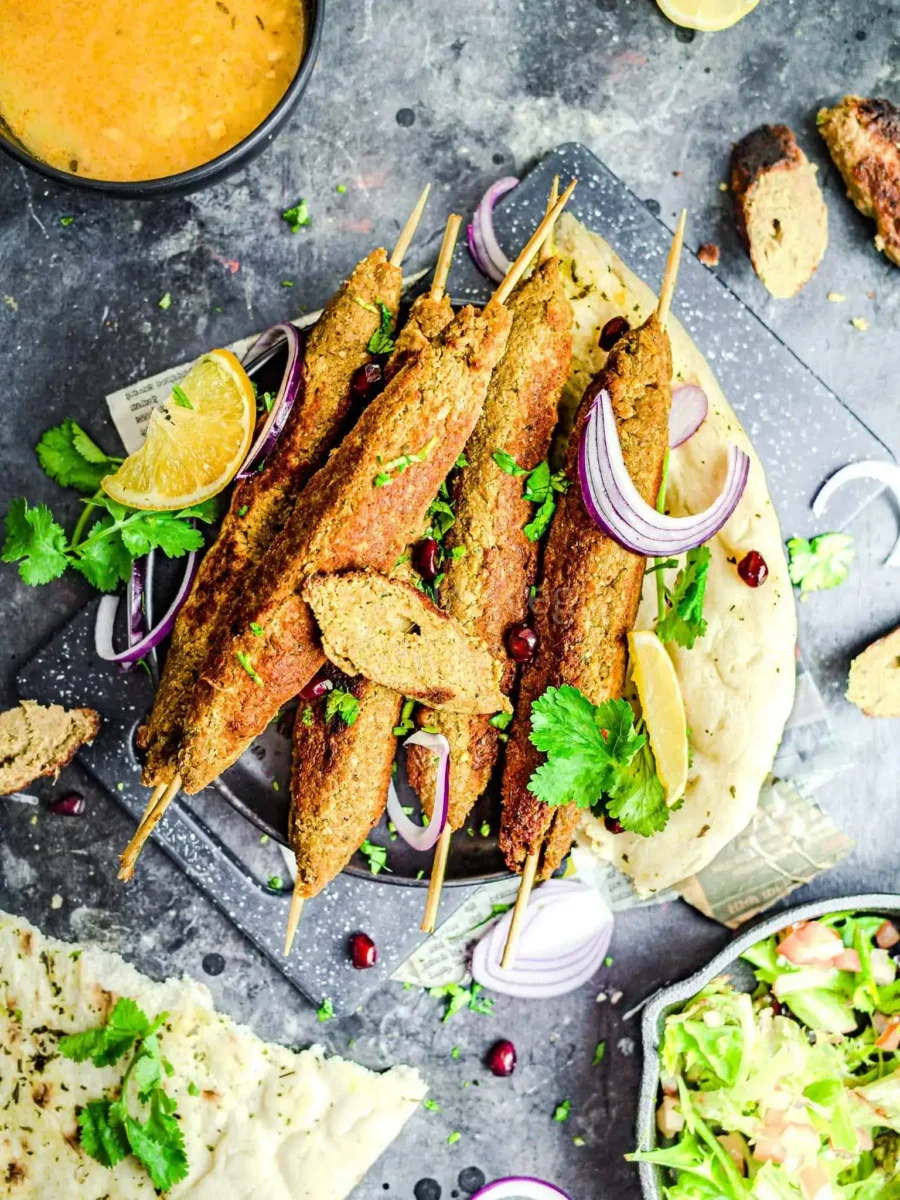
🧑🏫 Troubleshooting
Help! My kebab mix is crumbling …
This kebab mix is slightly more crumbly than sticky.
If you’re used to making meat-based kebabs, you may need practice working with the mixture. You need to use a combination of careful delicacy and firm-handedness to ensure the mixture sticks to the skewers.
If you still can’t get the mixture to stick, you have two options:
Firstly, add a boiled and mashed potato to the mixture. This aids in binding (and doesn’t interfere with the flavour).
Secondly, make shami kebabs — these are in the shape of flatter burger patties, so much easier to shape. One of my readers did the same:

🫙 Storage and Reheating
To store soya chunk kebabs, keep them refrigerated in an air-tight container and consume within three days.
To freeze vegan seekh kebabs, arrange them on a tray and freeze the tray for at least an hour, or until frozen. This prevents the seekh kababs from sticking to each other later in the freezing process. Once frozen, remove from the tray and transfer to an air-tight container or freezer bag. Freeze for up to three months.
Unfortunately, the uncooked seekh kebabs are too delicate to store. Both storage options must be done after cooking.
To reheat the soya chunk kababs, heat in an oven or frying pan until piping hot. I prefer not using a microwave, as it’s not the best at preserving texture.
Seekh kebabs also taste great cold. They’re ideal for picnics or travel.
🌯 Serving Suggestions
These soya chunk kebabs taste best when served as a kabab roll with freshly made naan, crunchy green salad, and delicious sauces.
Homemade vegan raita is always a classic, as is green coriander chutney, yoghurt mint sauce, tzatziki (fusion is always delicious!), garlic mayonnaise, or sweet chilli sauce.
Alternatively, you can serve vegan seekh kebabs as an appetiser to an Indian feast, alongside other starters like Punjabi potato and pea samosa or gluten free onion bhajis.
Want to get experimental? Crumble the cooked kebabs on top of pizza, or use them as a stuffing for vegan sausage rolls. It’s surprisingly delectable.
If you tried this vegan seekh kebab recipe — or any other recipe on my website — please leave a 🌟 star rating and let me know your thoughts in the ✍️ comments at the bottom of the page. Thanks for being a part of my community!
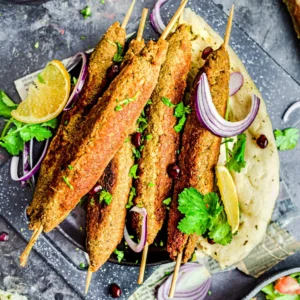
Vegan Seekh Kebabs (Soya Chunk Kababs)
Ingredients
- 150 g medium soy chunks
- 120 ml hot water to soak soy chunks
- 2 green chillies
- 80 g red onion very finely minced
- 1 tablespoon garlic ginger paste
- 1 ½` teaspoon salt
- ¾ teaspoon coriander powder
- ½ teaspoon red chilli powder
- ¼ teaspoon turmeric powder
- ½ teaspoon cumin powder
- ¼ teaspoon garam masala
- ¼ teaspoon black pepper powder
- 3 stems fresh coriander cilantro, chopped
- 3 stems mint chopped
- 20 g chickpea flour gram flour/besan/garbanzo bean flour
- 40 g plain flour all-purpose (AP) flour
- 40 g breadcrumbs
- 3 tablespoons water
- oil to taste, for frying the kebabs
Instructions
- Add 150 g medium soy chunks and 120 ml hot water to a large bowl. Cover and leave to rehydrate for 20-30 minutes. Once they've soaked, drain the water. Use your hands to squeeze any excess water from the soy chunks (this helps them absorb more flavour later!).
- Add the rehydrated soy chunks to a large mixer grinder along with 2 green chillies. Pulse until both have broken down into a fine mince.
- To a small, non-stick frying pan over low heat, add 20 g chickpea flour. Roast for around 5 minutes, stirring continuously, until fragrant. Turn off the heat and leave the flour to cool.
- To a large bowl, add the soy chunk and green chilli mixture, 80 g red onion (finely chopped), 1 tablespoon garlic ginger paste, 1 ½` teaspoon salt, ¾ teaspoon coriander powder, ½ teaspoon red chilli powder, ¼ teaspoon turmeric powder, ½ teaspoon cumin powder, ¼ teaspoon garam masala, ¼ teaspoon black pepper powder, 3 stems fresh coriander (chopped), and 3 stems mint (chopped). Mix well to ensure all the spices are evenly distributed. Next, add the roasted chickpea flour, 40 g plain flour, 40 g breadcrumbs, and 3 tablespoons water.
- Get in there with your hands mix everything well.
- Wet your hands, take some of the mixture, and shape it around a metal skewer. Squeeze the kebab into place. This can take practice!
- Heat oil (to taste) in a large pan over medium heat. Carefully place the kebabs onto the pan and drizzle over a little more oil. Once one side turns golden-brown, carefully rotate the kebabs. Cook this way until all sides are a lovely golden brown, then serve. You can also cook the kebabs on a grill or BBQ.

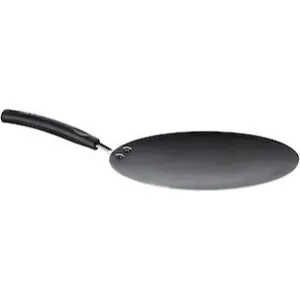
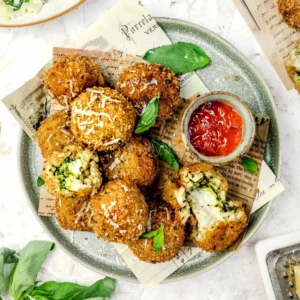
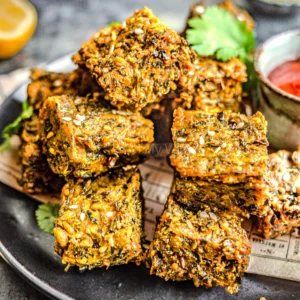
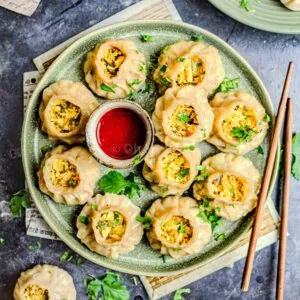
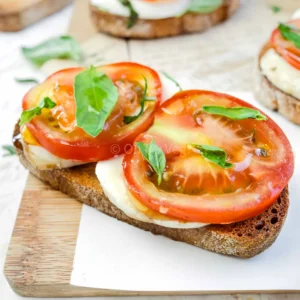


Hey Eleanor, this sounds delicious, can’t wait to make it.
Can you please tell me what plain flour is though? Is it whole wheat flour (aata) or refined flour (maida)?
Thank you so much!
Sorry the confusion. Plain flour is Maida. You can try using Atta, but I haven’t made it that way myself. You could also try using equal amounts of roasted Besan instead if you can’t get access to Maida!
Hi, can I use rice flour instead of besan or maida
Hi V,
Unfortunately, I would not recommend using rice flour. The gluten in maida / plain flour is needed to bind the kebabs together and the chickpea flour/besan is for the nutty flavour.
However, I will be updating this recipe in the upcoming weeks and will test how the recipe should be adapted for gluten free options/rice flour!
Hope that helps,
Ellanor